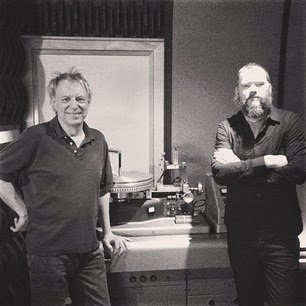Recently
I wrote about what looked like the last days of the famous RCA Studio A in Nashville. The studio had been ground zero for hits from everyone from
Willie Nelson to
Keith Urban, but developers had purchased the property and had planned to convert it into luxury condominiums.
Ben Folds, the current tenant of the studio, couldn't afford to purchase the studio himself, but managed to organize a groundswell of people who wanted to preserve the site in the interest of history.
After lots of press, a new buyer emerged with the intent of keeping the studio as a studio, a most wonderful turn of events. On Friday,
Bravo Development announced that it had entered into a contract for the sale of RCA Studio A to
AMT Trust for $5.6 million, a tidy profit over the $4.1 million the company had originally paid for it.
AMT Trust is a non-profit organization led by
Leiper's Fork philanthropist
Aubrey Preston, with the specific intention of saving Studio A from the wrecking ball.
The deal finalizes today at 5PM, but other potential buyers still can submit a bid until that time, so it's not a done deal yet. That said, this looks like a great victory for keeping the venerable old studio alive.
So many of the great recording facilities of yesterday have died, mostly because of soaring real estate costs. The expense of owning a major commercial studio is more than ever, but the prices that you can charge a client have actually gone down over the last 15 years. Just about the only way to save a studio like this anymore is to have it declared an historical site.
Thankfully, it looks that the piece of history that is RCA Studio A will live to see many more productive days.
----------------------------------




